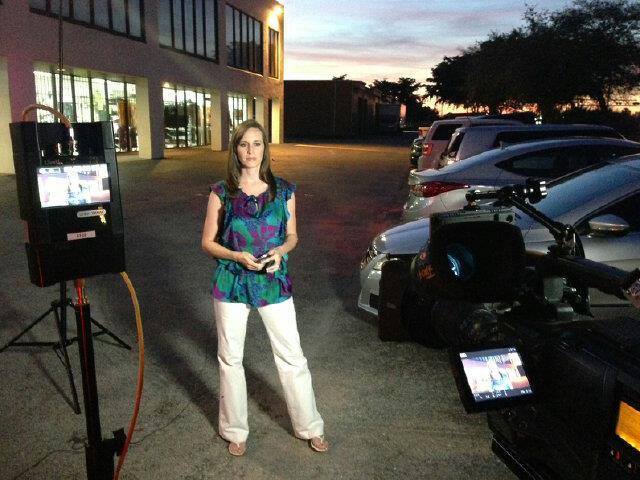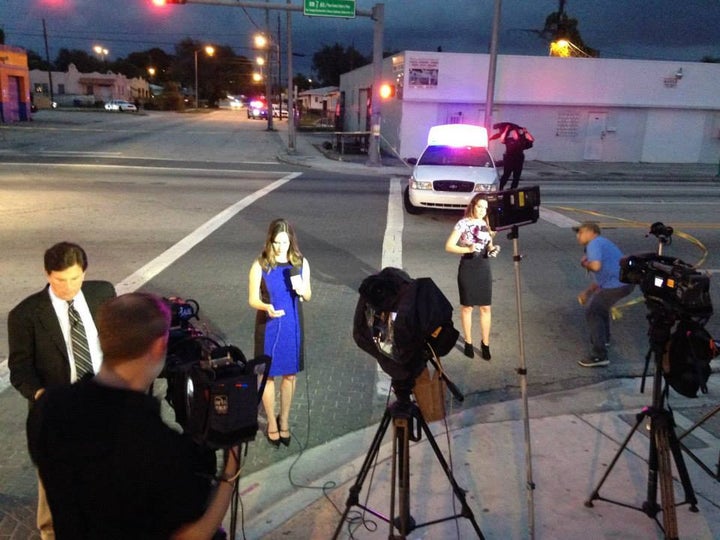Whenever something major happens, all the experts come out of the woodwork.
When a child falls into a gorilla exhibit at a zoo, it’s the parenting experts. When a gorilla is killed in that exhibit, it’s the animal experts. Today, it’s the political/foreign policy/religion/immigration experts.
The Media Experts
But there is one expert who is always out and about. It’s the media expert... and nine times out of 10, that person has never worked a day in the media industry. (That’s the funny thing about these self-proclaimed experts online. They don’t have any experience in their expertise.)
Before I disappoint everyone with the lack of agenda setting and scheming that really happens in newsrooms, let me address the term “the media” because, well, I don’t really know who that is.

Saying it’s “the medias” fault confuses me.
- Is that your local meteorologist?
- The person who covers lifestyle news in the city newspaper?
- The video editor at CNN?
- The host of an opinion show?
- Me writing this article?
- You on social media?
- Your neighbor who just started a blog?
I’m not quite sure who “the media” is (or are), but since everyone else is aware, for the sake of this post, I’ll use the term.
When people say news and media coverage is slanted and there’s an agenda, I really don’t see it. This is why.
The Morning Meeting
In local TV news, the day starts with a morning meeting.
This is when the assignment desk catches the incoming producers, reporters, editors, and others up on what happened over night and in the early morning.
If there are still lingering questions about a story, we’ll keep covering it and try to find the new information. If not, we’ll move on to what else is happening, what people are calling the news desk about, what Facebook posts have the most engagement. (This is why you should stop commenting “who cares” on those Kardashian posts.)
Phrases like, “Let’s spin this more liberally,” or “Make sure it has a conservative feel” or “Show this group of people in a certain way” are never uttered. Instead, it’s, “Make sure you get both sides.”
Telling the Story
Sometimes, one side doesn’t want to talk... no matter how hard you try to convince them it’s vital to tell both sides of the story. Sometimes the person who is talking to the media, isn’t as well spoken as the person telling the other side of the story. Sometimes, the person isn’t available to go on camera, so instead they send in quotes that will be used in a full screen graphic or they assign a public information officer to speak to the media instead.
For example, if it takes one person to get their point across in 10 seconds, that’s all we will use. If it takes another person :45 seconds, we’ll use the :45 seconds. We may cut up the :45 so it plays in two different clips, (because a :45 sound bite is too long) but that doesn’t mean “the media” is favoring one side by giving them more air time. It just means one person is better at giving sound bites. (And remember, in TV we get one minute and 15 seconds for a package.)
So, when I hear people say stories are one-sided or cater to one political belief system, it’s just not true. I’ve come to realize that people think their opinions are facts. To take it further, people will describe a news story and read so far into it that they create the bias on their own. If you look hard enough for something, you’ll find it - regardless if it’s really there or not.
Just because you don’t like what’s being covered, doesn’t mean it’s “fake news.”
When you see a story about Christmas shopping at the mall and the coverage is all about how busy the mall is with shoppers, some people could see that as a positive story because they love going out and being around lots of people in a busy mall around the holidays, while other people can think it’s terrible because they hate crowds and shopping.
See? The bias isn’t with “the media.” It’s with you and how you digest information.

Here’s another example of what happens in the field that many self-proclaimed media experts don’t understand.
Once I was covering people signing up their families to receive Christmas presents from the Salvation Army. We were talking to people in line, getting video of the process, and calling the assignment desk to share what we had.
There was a problem.
Everyone I was talking to and getting video of was hispanic. My managers told me, “You can’t show just hispanics. You need white people. You need black people.” But there were no white or black people to talk to or show.
When the story aired, guess what happened?
The calls and Facebook posts were all about how we were so biased and obviously racist for only choosing to show hispanics. Surely there were other people there too, but we wanted the coverage to look a certain way, so we only used certain sound bites and video. (Side note: I’m hispanic.)
I’ve had many of my live shots drop while I’m speaking. That’s not because someone in the control booth didn’t like what I was saying and cut me off. That is technology. Sometimes live shots drop. Again, if you’ve ever set one up, dialed it in, hooked up an IFB (if you’re a media expert, you know what that is), you’d understand.
Once, I forgot where I was. I was on my fourth story in a matter of six hours and couldn’t remember what city I was in. I’m not stupid or uneducated or “don’t know what the hell I’m doing,” I just forgot where I was for a second because TV news happens fast. Sometimes, faster than I can think.
Imagine that... for every story you do. That’s what happens when you work in news. If people don’t like what they see, for whatever reason, they will find a way to blame “the media” for using its agenda to make a point. Again, these people making these claims have never shot, written, or edited a vo/sot (there’ another news term.)
And just so you know, a reporter doesn’t write something and go on-air with it because it sounds good. The photographer is involved. A producer goes through it. Then, a managing editor checks it. Sometimes even more people will sign off on something before it makes air. Trust me, there is a lot of diversity in newsrooms and that’s what helps tell a balanced story, even if it’s not what you believe.
Breaking News
I can’t end this post without talking about breaking news because this is when all the media experts crawl out of the woodwork with their expertise on how to cover a mass shooting 15 minutes after it happens.

When breaking news happens, we usually find out by someone sitting at the assignment desk who heard it on the scanner. Sometimes a viewer will call the station. When that happens, a crew is set out the door to the location.
While the crew is in route, the assignment desk is making phone calls. Nine times out of 10, they don’t get a whole lot of information. Why not?
Contrary to what many think, when breaking news happens, most details aren’t yet known and a person isn’t chomping at the bit to tell the local TV station everything they know.
Instead, the police are doing their jobs trying to figure out what’s going on, if they are in a dangerous situation, if there are lives to save, etc. Spilling the beans isn’t at the top of their priority list.
When a reporter and photographer arrive on the scene, police tell us to wait for the Public Information Office to arrive. (The PIO is the person in charge of talking the media.) This also isn’t immediate.
We can’t remain silent for hours in a breaking news situation, so we talk to people nearby. Witnesses who may have heard something or seen something. Sometimes their information is right, sometimes it’s not. There is no way to know until an investigation is finished... and we can’t ignore a breaking news situation for that long.
So, we go on-air and say, “A neighbor says he saw...” and follow it up with “Police are here and haven’t confirmed this, but we see...”
In a perfect world, we would roll up and the PIO would be ready with every piece of correct information for us to tell the entire story right then and there. (It’s shocking to see how many people believe this is how things happen.)
So yes, there is a lot of misinformation in breaking news situations. It’s called “breaking” news for a reason. After “breaking” it’s “developing.”
Back to the Media Experts
I could go on, and on, and on... but I’d be wasting my breath (or time moving my fingers over this keyboard) because we all know you can’t possibly know all about how the media industry works... if you’ve never worked in it. I can’t sum up a decade of experience in one measly blog post or a Facebook comment, so I’ll just leave it here and have a chuckle when someone who has never worked in the industry tells me what they know (because they saw it on TV or read it online.)
But if you do want to learn a little bit about your so-called expertise, you should visit a newsroom. Shadow a reporter, photographer, or producer for a few days. I guarantee you’ll be disappointed, at not only the lack of glamour, but lack of agenda “the media” is trying to portray on-air. The truth is, we don’t even have time to create an agenda if we wanted to... and if we found extra time, we’d eat!
Christina Nicholson is a former TV reporter and anchor who now owns and operates a public relations firm, Media Maven. She helps small business owners earn exposure through media relations, video production, writing, and blogging. She also recently launched Master your PR - an online course that teaches small business owners how to handle public relations on their own. Christina also has a local lifestyle and family blog, Mascara Maven. She lives in South Florida with her husband and two young children.
